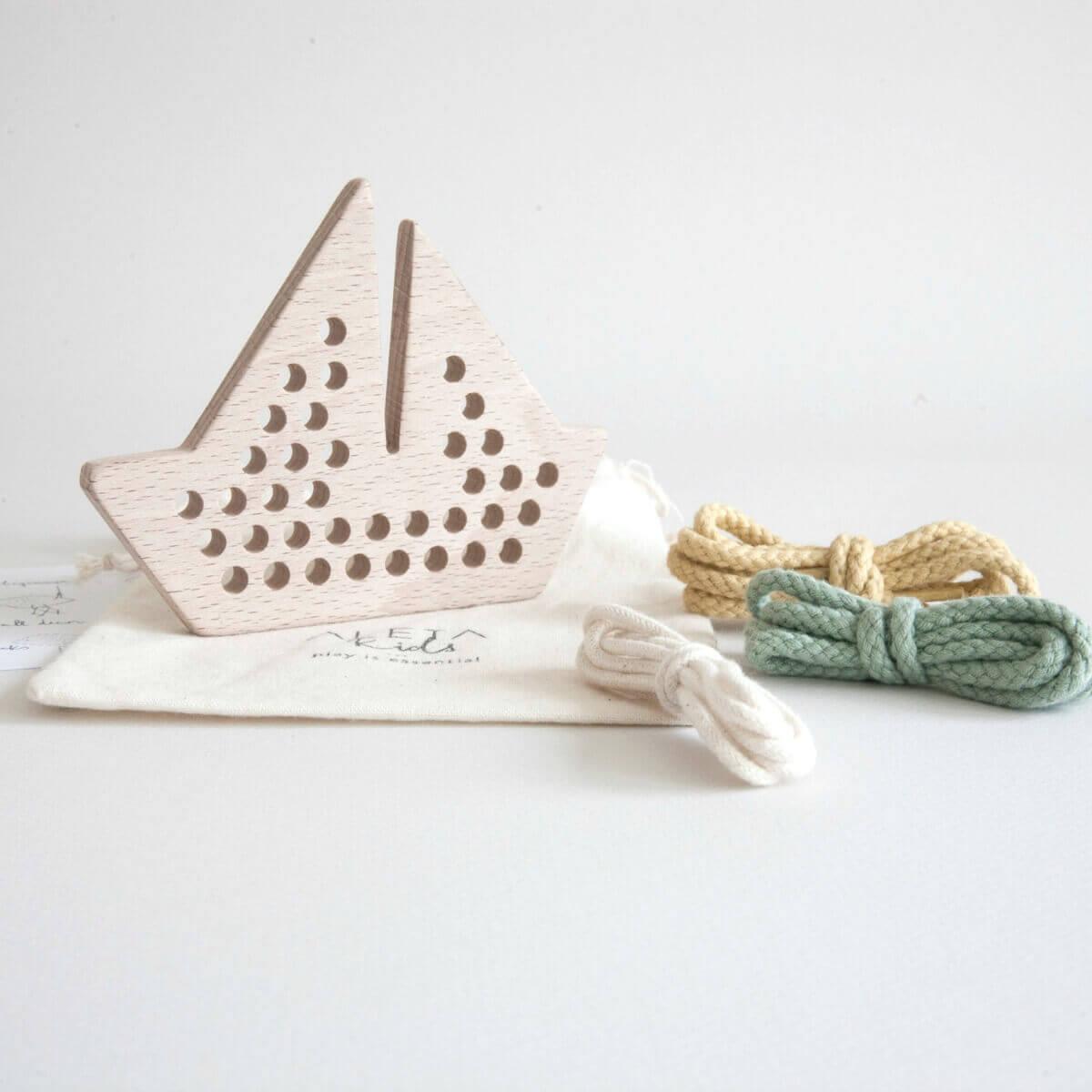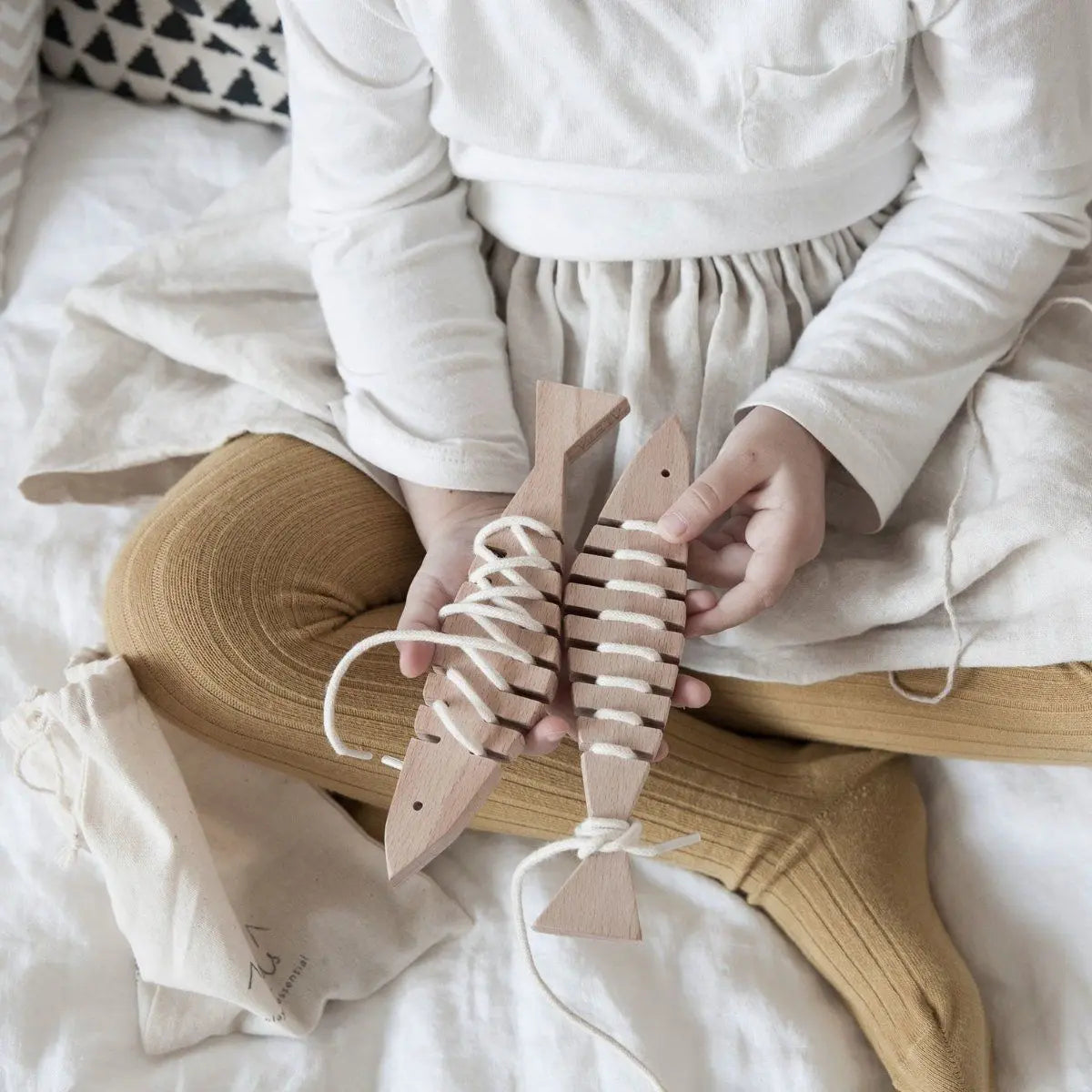Unlocking creativity in children is a vital part of their development. But how can parents and educators encourage their little ones' creative minds to flourish? Enter lacing and threading activities.
From finger painting to shoelace weaving, these hands-on activities not only provide entertainment but also serve as powerful tools for nurturing imagination and artistic expression. By engaging in lacing and threading, children are given the opportunity to explore colours, patterns, and textures, stimulating their senses and fostering fine motor skills.
In today's digital age, it's crucial for children to have tactile experiences that promote creativity. Lacing and threading activities offer a break from screens and provide an outlet for self-expression. Whether it's threading beads to create a necklace or lacing cards to form shapes, these activities encourage problem-solving, concentration, and attention to detail.
So, if you're looking for ways to foster your child's imaginative abilities, consider incorporating lacing and threading into their routine. In this article, we will delve into the benefits of these activities and provide some practical ideas to spark your child's creativity.
The importance of nurturing creativity in children
Lacing and threading activities are suitable for children of all ages, even toddlers. For young children, simpler activities that focus on basic concepts, such as colours, shapes, and patterns, are recommended. Threading beads onto a string, lacing cards with pre-punched holes, or weaving ribbons through a cardboard frame are excellent options to introduce young children to lacing and threading.
These activities not only enhance their fine motor skills but also promote hand-eye coordination and concentration. As children manipulate the materials, they develop their sensory perception and learn cause and effect relationships. The repetitive nature of lacing and threading also helps develop patience and perseverance in young children.
Lacing and threading activities for young children
Lacing and threading activities offer a myriad of benefits for children's development. Firstly, they provide a break from screens and digital devices, allowing children to engage in tactile experiences that stimulate their senses. These activities encourage children to explore different textures, colours, and patterns, which in turn promotes their sensory development.
Secondly, lacing and threading activities foster fine motor skills. As children manipulate the threads, laces, or strings, they improve their hand dexterity, finger strength, and hand-eye coordination. These skills are not only essential for everyday tasks but also for more complex activities such as writing, drawing, and playing musical instruments.
Furthermore, lacing and threading activities enhance problem-solving skills and critical thinking. Children are required to plan their actions, make decisions, and find solutions to challenges they encounter during the activity. This process encourages creativity, as children explore different possibilities and experiment with different techniques.
Benefits of lacing and threading activities
Fine motor skills are crucial for children's overall development, as they enable them to perform essential tasks such as grasping objects, writing, and self-care activities. Lacing and threading activities provide an excellent opportunity for children to refine their fine motor skills in a fun and engaging way.
As children manipulate laces, threads, or strings, they strengthen the muscles in their hands and fingers. This, in turn, improves their ability to control and coordinate their movements. The precise nature of lacing and threading requires children to use their pincer grip, which is essential for holding writing utensils and manipulating small objects.
Moreover, lacing and threading activities develop hand-eye coordination, as children need to align the lace or thread with the holes or loops. This coordination between the visual and motor systems is essential for various tasks, such as catching a ball, tying shoelaces, or using utensils. By practicing lacing and threading, children improve their ability to synchronise their movements with what they see.
How lacing and threading activities enhance fine motor skills
Lacing and threading activities are not limited to young children; they can also be enjoyed by older children and even adults. These activities offer a creative outlet for individuals of all ages and can be used as a means of relaxation, stress relief, and self-expression.
For older children, more complex lacing and threading activities can be introduced. They can create intricate patterns, designs, or even sculptures using materials such as yarn, leather, or wire. These activities encourage older children to think critically, experiment with different techniques, and explore their personal artistic style.
Adults can also benefit from lacing and threading activities. Engaging in these hands-on experiences can be a form of mindfulness and a way to unwind from the stresses of daily life. Lacing and threading can be incorporated into various crafts, such as jewelry making, embroidery, or even basket weaving, allowing adults to tap into their creativity and create something unique and meaningful.
Lacing and threading activities for older children and adults
Hand-eye coordination is a vital skill that allows individuals to synchronise their hand movements with what they see. It is crucial for a wide range of activities, including sports, playing musical instruments, and even typing on a keyboard. Lacing and threading activities provide an effective way to improve hand-eye coordination in a fun and interactive manner.
By threading laces or strings through holes or loops, individuals must visually assess the position of the hole and align their hand movements accordingly. This process requires precision, accuracy, and the ability to make adjustments in real-time. Regular practice of lacing and threading activities can significantly enhance hand-eye coordination, making everyday tasks easier and more efficient.
Using lacing and threading activities to improve hand-eye coordination
Lacing and threading activities can be incorporated into various educational settings, such as classrooms, therapy sessions, or homeschooling curricula. These activities offer a hands-on approach to learning and can be adapted to cater to specific educational goals or therapeutic needs.
In a classroom setting, lacing and threading activities can be used to teach concepts such as colours, shapes, patterns, or even mathematical concepts such as sequencing or counting. They can also be incorporated into storytelling activities, where children use lacing cards or threads to create visual representations of the stories they hear or read.
In therapy sessions, lacing and threading activities can be used to develop fine motor skills, hand-eye coordination, and sensory integration. Occupational therapists often utilise these activities to help individuals with motor difficulties, coordination issues, or sensory processing disorders. The repetitive nature of lacing and threading can have a calming effect on individuals and promote focus and concentration.
Incorporating lacing and threading activities into curriculum or therapy sessions
Lacing and threading activities can be easily created using materials found at home or in craft stores. Here are some DIY lacing and threading activity ideas to get you started:
1. Button Sorting: Collect a variety of buttons in different sizes, shapes, and colours. Provide children with a shoelace or string and encourage them to sort the buttons based on specific criteria, such as colour or size, by threading them onto the lace or string.
2. Nature Bracelets: Take a strip of duct tape and wrap it around your child's wrist, sticky side out. Go for a nature walk and encourage your child to collect small items such as leaves, flowers, or twigs. They can then thread these items onto the duct tape bracelet, creating a unique nature-inspired accessory.
3. Pasta Threading: Use variety of dried pasta shapes, such as penne, macaroni, or rigatoni and provide children with a string or shoelace, let them thread the pasta shapes onto the string to creating their own pasta jewelry or necklaces.
4. Cardboard Weaving: Cut out a cardboard frame with evenly spaced slits along the edges. Provide children with strips of coloured paper or fabric and encourage them to weave them through the slits, creating a vibrant and textured artwork.
DIY lacing and threading activity ideas
If you prefer ready-made lacing and threading activities, there are numerous products and resources available to facilitate the creative process. Here are some popular options:
1. Lacing Cards: These are pre-punched cards with designated holes or lacing patterns. They come in various themes, such as animals, vehicles, or letters, and are designed to help children practice their lacing skills while engaging with different concepts.
2. Threading Beads: These sets typically include a variety of colorful beads and a string or shoelace. Children can thread the beads onto the string, creating their own unique jewelry or decorative items.
3. Sewing Kits: Sewing kits for children often include pre-cut felt shapes, plastic needles, and colorful threads. These kits allow children to practice basic sewing skills while creating their own stuffed animals, keychains, or accessories.
4. Weaving Looms: Weaving looms come in different sizes and materials and provide a structured platform for weaving various materials such as yarn, fabric strips, or ribbons. They allow individuals to create intricate patterns or designs while developing their weaving skills.
Lacing and threading activity products and resources
In a world dominated by screens and digital devices, it is crucial to provide children with opportunities for tactile experiences that nurture their creativity. Lacing and threading activities offer a unique and engaging way to stimulate children's imagination, promote fine motor skills, and enhance hand-eye coordination.
By incorporating lacing and threading into their routine, parents and educators can create an environment that encourages self-expression, problem-solving, and critical thinking. Whether it's through DIY activities or ready-made products, lacing and threading provide endless possibilities for children to explore colors, patterns, and textures, fostering their artistic abilities and nurturing their creative minds. So, let's embrace the power of lacing and threading and watch our children's creativity flourish!
Conclusion: Encouraging creativity through lacing and threading activities
Unlocking creativity in children is a vital part of their development. But how can parents and educators encourage their little ones' creative minds to flourish? Enter lacing and threading activities.
From finger painting to shoelace weaving, these hands-on activities not only provide entertainment but also serve as powerful tools for nurturing imagination and artistic expression. By engaging in lacing and threading, children are given the opportunity to explore colours, patterns, and textures, stimulating their senses and fostering fine motor skills.
In today's digital age, it's crucial for children to have tactile experiences that promote creativity. Lacing and threading activities offer a break from screens and provide an outlet for self-expression. Whether it's threading beads to create a necklace or lacing cards to form shapes, these activities encourage problem-solving, concentration, and attention to detail.
So, if you're looking for ways to foster your child's imaginative abilities, consider incorporating lacing and threading into their routine. In this article, we will delve into the benefits of these activities and provide some practical ideas to spark your child's creativity.
Mindful Moments, Thread by Thread
Lacing toys support focus, coordination, and quiet creativity. Thoughtfully designed for little hands, our wooden threading sets invite slow play and help build confidence through movement and rhythm.
View Lacing & Threading Toys














